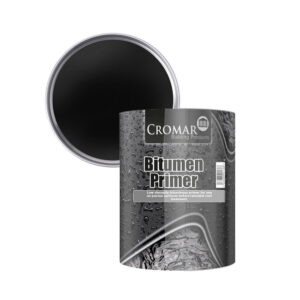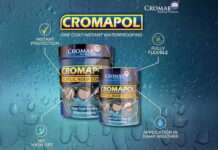Few ERoofing products are quite as versatile as Bitumen Primer. Bitumen Primer is formulated using bitumen as a main ingredient. It pulls double duty by both sealing porous materials while also laying the groundwork for other bitumen-based layers to be installed.
Porous materials include things like concrete which are normally difficult for things to adhere to. This is because the pores absorb too much of the adhesive. Bitumen primer can even be used on asbestos cement. However, since asbestos is carcinogenic this can only be performed by a fully licensed roofer.
Bitumen primer makes it far easier to install other bituminous layers on top as well. This can range from bituminous roofing or shed felt to bituminous corrugated sheeting like Corrapol-BT.
You will need:
- Bitumen primer
- Disposable Brushes
- Cleaning cloth
- Wire Brush
Applying the primer
The primer should be installed on a warm, dry day, at least above 5 degrees celsius with no rainfall. The area should be cleaned first with a cleaning cloth and a wire brush to make sure it’s free of grime, grease, moss and other such detritus, as well as rust.
After this process, the primer can be painted on with a brush in thick, even coats and then left to dry. Non-porous surfaces like metals might see up to 12 square metres of coverage per litre of primer, but more porous materials will require more primer to cover. Within a mere 30 minutes it will have already begun to cure. If you make a mistake you should wipe it off immediately.
If you don’t have a disposable brush you can use a regular brush with some white spirit on hand to clean it as soon as possible after application. After the primer has fully dried you can begin to think about installing the bituminous layers. These could be anything from products like torch-on roofing felt to bituminous corrugated sheeting.








